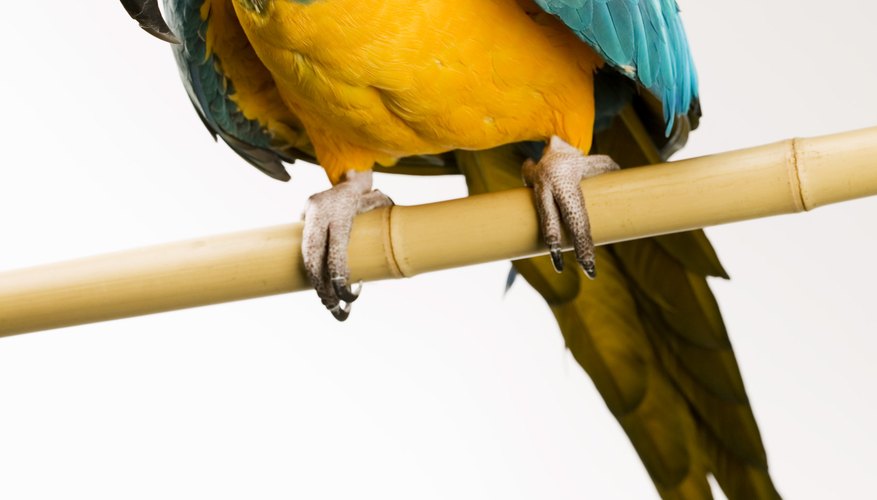Deciphering the meaning of a pet bird's breeder tag number can tell you how old your bird is and in what state and breeding facility the bird was hatched. You may also be able to contact the breeder to find out about your bird's heritage and medical background, information that can prove valuable if your bird becomes ill. Nearly all bird breeder tags use the same format, which makes "cracking the code" a straightforward process.
- Deciphering the meaning of a pet bird's breeder tag number can tell you how old your bird is and in what state and breeding facility the bird was hatched.
Restrain your pet bird safely and locate the breeder tag. The breeder tag is a small metal band or ring around the lower part of the bird's left or right leg, right above the foot.
Use a magnifying glass to view the markings on the band. Copy all of the information onto a piece of paper, including the orientation of the letters and numbers (horizontal or vertical) and any logos. Note what colour the band is, and whether it is a solid ring or has a split in it.
Read the vertically-oriented codes to determine some basic information about your bird. A two-digit number indicates the year in which the bird hatched (e.g., 08 for 2008), and two letters indicate the state the bird was hatched in (e.g., TX for Texas).
Read the horizontal codes. A series of two to four numbers indicate the bird's individual record code for the year's hatches at a particular breeding facility. A series of two to four letters is the breeding facility's identification code--typically an abbreviation for the name of the facility.
Examine the logo, if there is one. For example, if the leg band has a circle with the letters "AFA" inside, this indicates that the breeding facility is a member if the American Federation of Aviculture.
- Read the vertically-oriented codes to determine some basic information about your bird.
- For example, if the leg band has a circle with the letters "AFA" inside, this indicates that the breeding facility is a member if the American Federation of Aviculture.
Contact the organisation indicated by the logo, if the leg band has one. The most common logo codes are AFA (American Federation of Aviculture), NFSS (National Finch and Softbill Society), NCS (National Cockatiel Society), ACS (American Cockatiel Society), and SPBE (Society of Parrot Breeders & Exhibitors). These organisations will contact the breeding facility at your request, but it is up to the individual breeder whether to respond to your request for information.
Contact the major bird band manufacturers if the band does not have an organisation's logo. Most bird leg bands are made by L&M Bird Leg Bands. Other manufacturers include Red Bird Products and DL Products. To protect the privacy of their customers, manufacturers will generally request information on your behalf but will not provide you with contact information for the breeding facility.
- Contact the organisation indicated by the logo, if the leg band has one.
- Contact the major bird band manufacturers if the band does not have an organisation's logo.
Try looking up the breeder identification code on an online bird leg band registry. Several websites (listed below in Resources) offer searchable databases and lists of known breeder codes.
TIP
If you find the name of the breeding facility through a registry, be specific about what information you're looking for and allow a few weeks for a response. While most breeders are forthcoming with information about birds hatched at their facilities, many prefer not to provide a physical address, so you probably will not be able to visit the facility in person. Breeding facilities are typically restricted for the safety and security of the birds. If your bird's tag is a split ring, rather than a flat, solid band, your bird was not domestically bred; it was imported from the wild. In this case, the only information you are likely to find is when the bird was imported into the United States and through which quarantine station.
WARNING
Even if you have a physical address for your bird's breeding facility, do not make an unannounced visit and be sure to respect the breeder's privacy.
